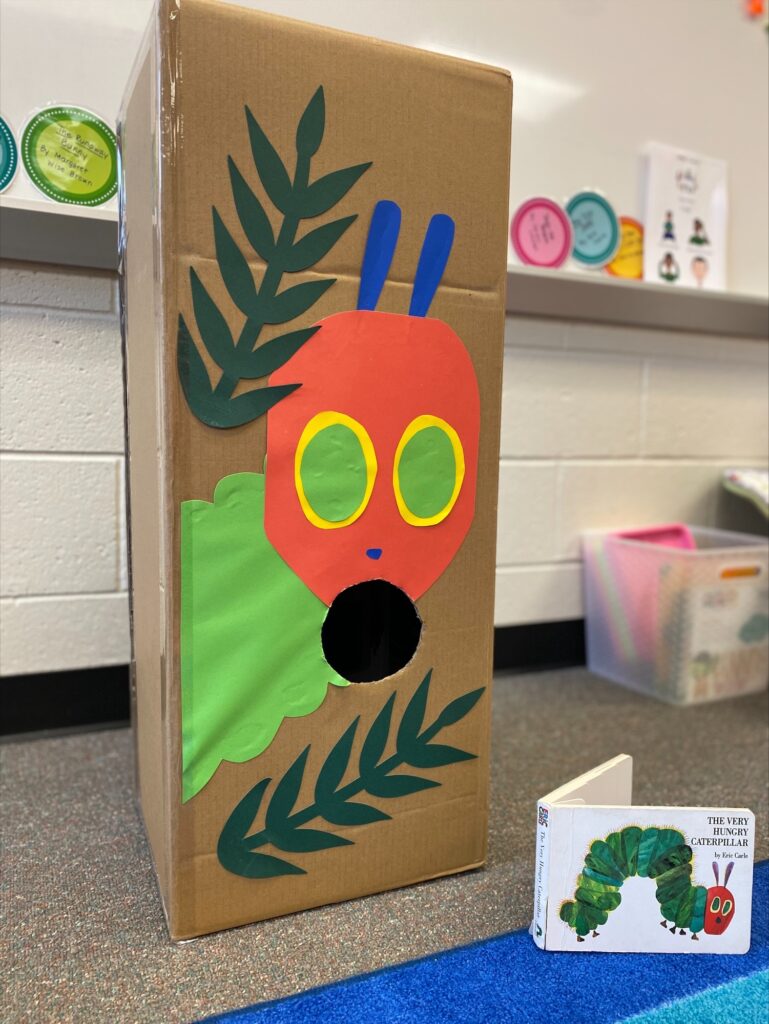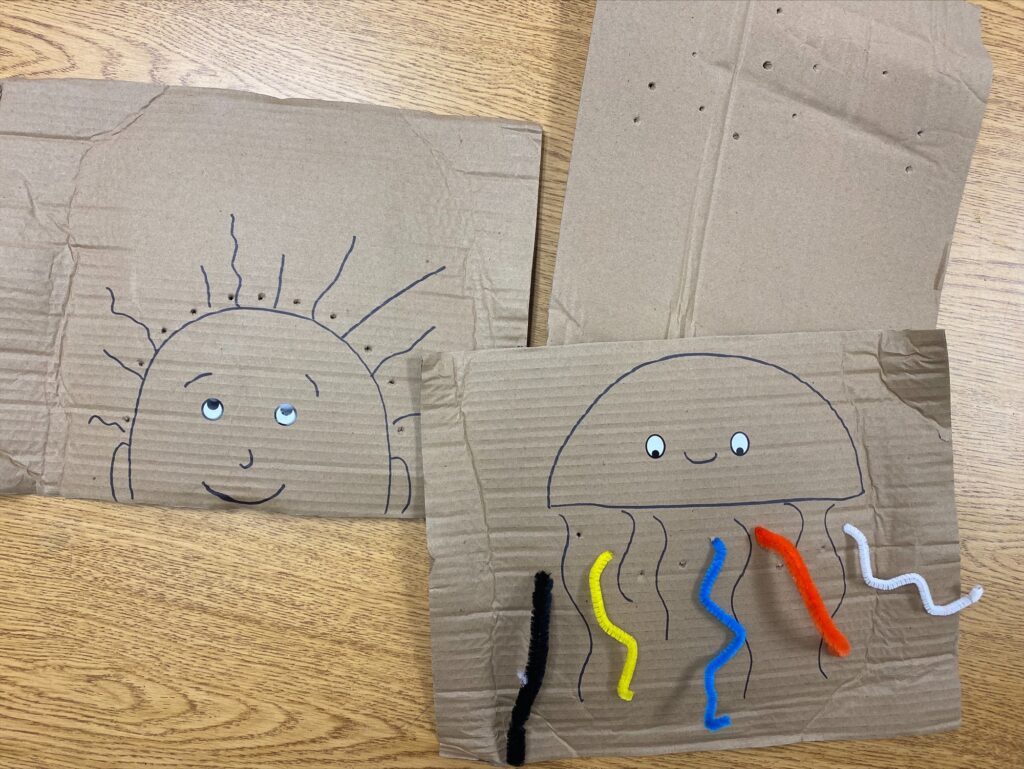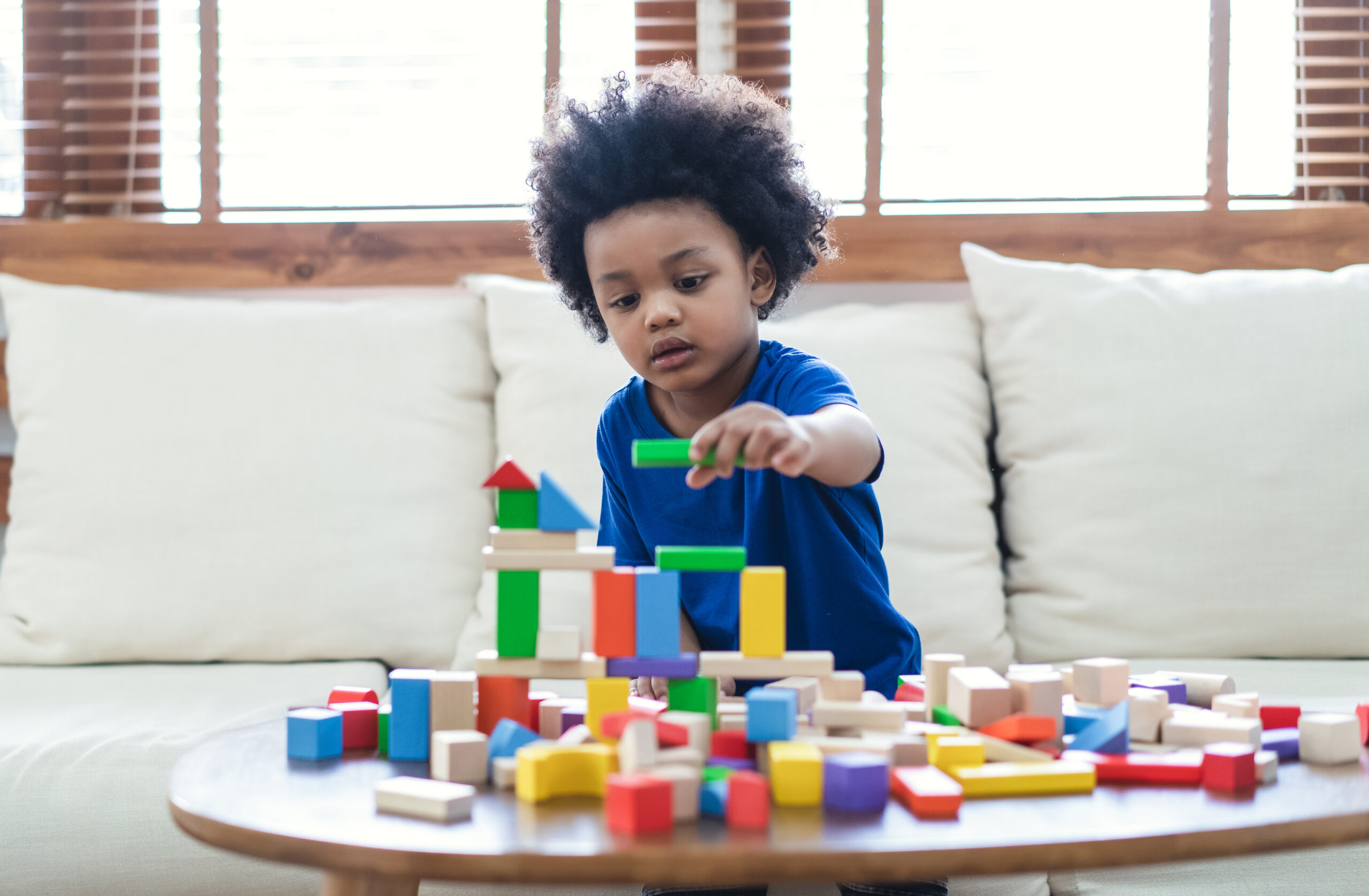Guest Blogger:
Adrini Fobes
Gwinnett County Teacher & Parent

It never fails. It’s the biggest gift of the birthday party, and all eyes are on your little one as they unwrap something thoughtful and extravagant. They rip it open, and their eyes go wide with glee. They just can’t wait to play with … the box. The bubble-wrap. A scrap of tape. The Styrofoam packaging. Why? Why do our kids insist on playing with garbage?
Kids are natural explorers, and trash is a tempting frontier. “It’s something new and it’s something I’m not supposed to have? Sign me up!” Luckily for us parents and caregivers, there are tons of innovative ways we can harness the power of these disposables. In the spirit of reusing what we already have around the house, here are five throw-away items that are worth hanging on to.
Cardboard Boxes


It’s no secret that small kids love big cardboard boxes at least as much as they love the toys that came in them. Believe it or not, it’s not just to embarrass you in front of your in-laws on Christmas morning. In the age of two-day shipping, we often have boxes to spare!
One simple way we can use this with our kids is by letting them draw on them – or in them! A pack of crayons or markers goes a long way when seated inside your very own cardboard fortress. Your little learner may also enjoy creating cities by pretending the boxes of any size are buildings or constructing ramps and bridges for their toy vehicles. Boxes trimmed into manageable pieces by an adult could be used for art projects (marker and paint won’t soak through cardboard as quickly as they will on copy paper) or scattered on the ground for a quick game of “The Floor is Lava”.
You can also try pressing holes through the cardboard and letting kids poke items into it – like drawing a vase onto the cardboard and inserting flower stems found outside. Another fun game is to put items in a Mystery Box and have kids try to guess what they are by touching and feeling with their eyes closed or heads turned. No peeking!
Toilet Paper Tubes


Toddler parents, it’s going to be a while before your kiddos learn that they don’t actually need a metric ton of toilet paper for each flush. It’s safe to say we’ve all got some extra toilet paper tubes laying around the house. Hang on to them! The possibilities are endless. There are tons of craft ideas for toilet paper tubes, from rocket ships to butterflies and everything in between.
Another fun activity is using masking tape or painters’ tape to attach toilet paper tubes to a wall vertically and within kids’ reach. By doing this, kids practice fine motor skills as they use tools or fingers to drop items into their new ‘pipes’. Use your imagination! Drop cotton balls into cups and pretend they’re marshmallows at a hot chocolate factory, slide small vehicles through the rolls, sort pom poms by color or size, and so on. This activity also has a strong tie-in to engineering as children maneuver the tubing to see where else they can get their item to land.
Toilet paper rolls can be dipped in paint and used as stamps – a circle, an oval, or even a heart are all easy shapes to recreate. They can be stacked and knocked over without too much noise or risk. They can also be laced onto a long string for a new way to create shapes. If you cut slits into the toilet paper tubes, you can insert craft stick puppets – think of the five little frogs that sat on a log! Manipulating craft sticks also gives great fine motor practice.
Plastic Disposable Cups
(rinse first)
The next time you have a cookout and find yourself with an army of leftover disposable cups, consider rinsing them and reusing them for early learning. Disposable cups are wonderful for stacking and building since they’re also less noisy and risky than wooden blocks. Consider adding craft sticks to your construction for bridges, planks, and catwalks.
Disposable cups are wonderful for stacking and building since they’re also less noisy and risky than wooden blocks.
Empty cups are wonderful for sorting small items – glue them down to a scrap of cardboard for more stability. Toddlers LOVE to fill and spill, so empty cups are a fun addition to their toy collection. Along the same lines of filling and dumping, empty cups are also great in the tub or water table for fun pouring practice.
Plastic Takeout Containers
As if we need another excuse to get Uber Eats for dinner, plastic takeout containers have tons of uses for small kids. They’re handy to keep around for when your toddler wants to “help” you in the kitchen. The rectangular ones make great activity trays, keeping materials corralled and easier for little hands to find. The tall, cylindrical ones are another great option for fill-and-spill as kids practice transferring items from one container to another.
If your kids have a play kitchen, filling it with clean leftover disposables is great for the planet and our wallets. Plus, it can be rewarding for kids to play with actual food items they see in use rather than toy replicas.
Catalogs and Magazines
Magazines and catalogs are an early learning treasure trove. Kids can participate in a scavenger hunt based on their developmental needs, searching for certain colors, letters, or even sight words. Photos can be sorted into living and non-living, needs and wants, or whichever topics may be applicable to your learner. They’re also perfect for ripping and shredding, which is a wonderful strengthening practice for little fingers.
Even simply flipping through the pictures and letting your child lead the conversation, pointing out what they notice, is an incredibly worthwhile practice for language development.
Bonus: Plastic Bottles
Although single-use plastics aren’t ideal, they are easy to reuse for our kids’ education and enjoyment.
The caps to drink bottles are great for stamping and painting circles – the twisting motion is a helpful skill. Bottles can also be refilled with lots of liquids for experimenting. Water, oil, food coloring, and glitter are fun for kids to mix and shake. Like disposable cups, clean bottles can be added to water play for even more pouring practice. If you have a collection of empty plastic bottles, try Recyclable Bowling! Kids will get lots of gross motor practice as they stand the bottles up in formation and knock them down with a large ball (or sofa pillow – speaking from experience here).
Early learning is an adventure – for kids and caregivers both! Enjoy time with your little one by finding new ways to explore old items. Happy hunting!



